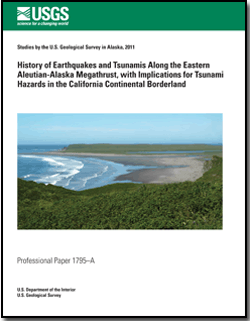 Abstract
Abstract
Complete penetration of the Otuk Formation in a continuous drill core (diamond-drill hole, DDH 927) from the Red Dog District illuminates the facies, age, depositional environment, source rock potential, and isotope stratigraphy of this unit in northwestern Alaska. The section, in the Wolverine Creek plate of the Endicott Mountains Allochthon (EMA), is ~82 meters (m) thick and appears structurally uncomplicated. Bedding dips are generally low and thicknesses recorded are close to true thicknesses. Preliminary synthesis of sedimentologic, paleontologic, and isotopic data suggests that the Otuk succession in DDH 927 is a largely complete, albeit condensed, marine Triassic section in conformable contact with marine Permian and Jurassic strata.
The Otuk Formation in DDH 927 gradationally overlies gray siliceous mudstone of the Siksikpuk Formation (Permian, based on regional correlations) and underlies black organic-rich mudstone of the Kingak(?) Shale (Jurassic?, based on regional correlations). The informal shale, chert, and limestone members of the Otuk are recognized in DDH 927, but the Jurassic Blankenship Member is absent. The lower (shale) member consists of 28 m of black to light gray, silty shale with as much as 6.9 weight percent total organic carbon (TOC). Thin limy layers near the base of this member contain bivalve fragments (Claraia sp.?) consistent with an Early Triassic (Griesbachian-early Smithian) age. Gray radiolarian chert dominates the middle member (25 m thick) and yields radiolarians of Middle Triassic (Anisian and Ladinian) and Late Triassic (Carnian-late middle Norian) ages. Black to light gray silty shale, like that in the lower member, forms interbeds that range from a few millimeters to 7 centimeters in thickness through much of the middle member. A distinctive, 2.4-m-thick interval of black shale and calcareous radiolarite ~17 m above the base of the member has as much as 9.8 weight percent TOC, and a 1.9-m-thick interval of limy to cherty mudstone immediately above this contains radiolarians, foraminifers, conodonts, and halobiid bivalve fragments. The upper (limestone) member (29 m thick) is lime mudstone with monotid bivalves and late Norian radiolarians, overlain by gray chert that contains Rhaetian (latest Triassic) radiolarians; Rhaetian strata have not previously been documented in the Otuk. Rare gray to black shale interbeds in the upper member have as much as 3.4 weight percent TOC. At least 35 m of black mudstone overlies the limestone member; these strata lack interbeds of oil shale and chert that are characteristic of the Blankenship, and instead they resemble the Kingak Shale. Vitrinite reflectance values (2.45 and 2.47 percent Ro) from two samples of black shale in the chert member indicate that these rocks reached a high level of thermal maturity within the dry gas window.
Regional correlations indicate that lithofacies in the Otuk Formation vary with both structural and geographic position. For example, the shale member of the Otuk in the Wolverine Creek plate includes more limy layers and less barite (as blades, nodules, and lenses) than equivalent strata in the structurally higher Red Dog plate of the EMA, but it has fewer limy layers than the shale member in the EMA ~450 kilometers (km) to the east at Tiglukpuk Creek. The limestone member of the Otuk is thicker in the Wolverine Creek plate than in the Red Dog plate and differs from this member in EMA sections to the east in containing an upper cherty interval that lacks monotids; a similar interval is seen at the top of the Otuk Formation ~125 km to the west (Lisburne Peninsula). Our observations are consistent with the interpretations of previous researchers that Otuk facies become more distal in higher structural positions and that within a given structural level more distal facies occur to the west. Recent paleogeographic reconstructions indicate that the Otuk accumulated at a relatively high paleolatitude with a bivalve fauna typical of the Boreal realm.
A suite of δ13Corg (carbon isotopic composition of carbon) data (n=38) from the upper Siksikpuk Formation through the Otuk Formation and into the Kingak(?) Shale in DDH 927 shows a pattern of positive and negative excursions similar to those reported elsewhere in Triassic strata. In particular, a distinct negative excursion at the base of the Otuk (from ‒23.8 to ‒31.3‰ (permil, or parts per thousand)) likely correlates with a pronounced excursion that marks the Permian-Triassic boundary at many localities worldwide. Another feature of the Otuk δ13Corg record that may correlate globally is a series of negative and positive excursions in the lower member. At the top of the Otuk in DDH 927, the δ13Corg values are extremely low and may correlate with a negative excursion that is widely observed at the Triassic-Jurassic boundary.